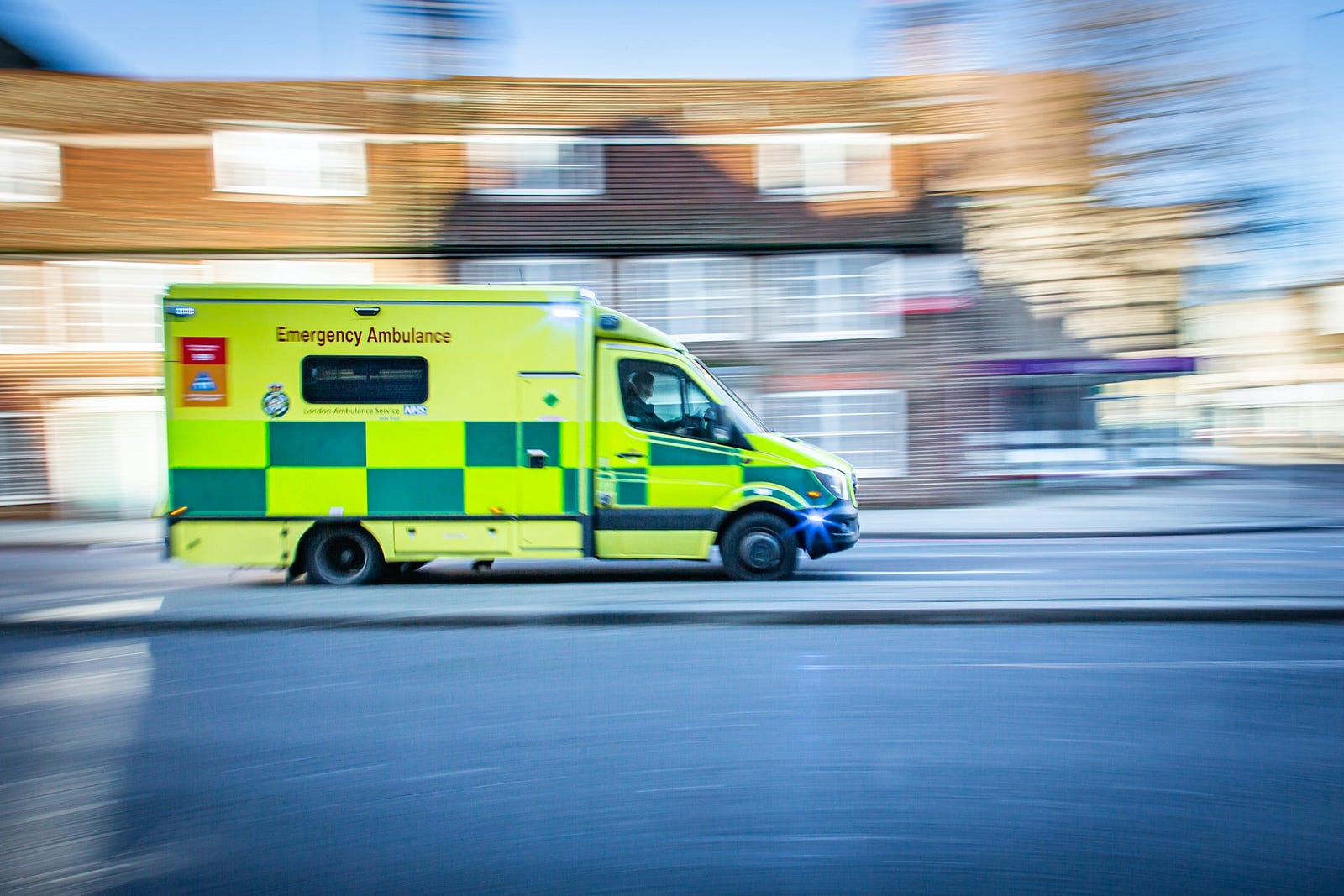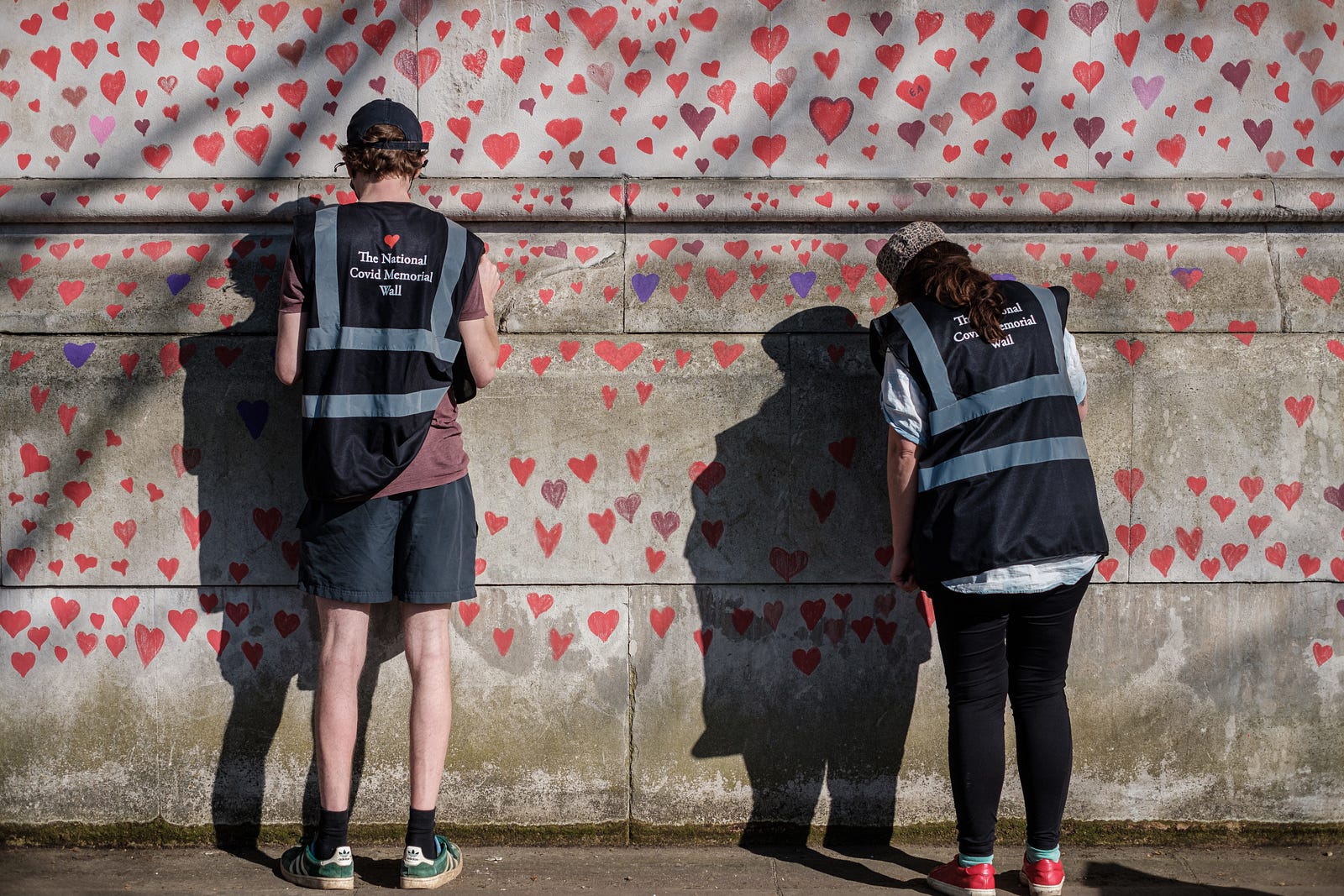When it comes to the proportion of patients seen on time, University Hospitals Birmingham Trust ranks second bottom in the country. The average waiting time is 23 weeks — almost twice the national average

The huge impact of Covid-19 on the NHS is far from over. More than 6.3 million patients are waiting for routine treatment or surgery, according to the latest official data for March 2022. Some 300,000 people have been waiting for more than a year and almost 17,000 for more than two years.
This is a record number — 50% higher than before the pandemic — and, according to Sajid Javid, Secretary of State for Health, it will continue to grow until at least 2024. Projections by the Institute for Fiscal Studies (IFS) estimate that, in the best case scenario, the waiting list will not return to pre-pandemic levels before mid-2025.
“You have to wait and wait and wait,” says Ana Gomez, a support worker from Birmingham. “It’s not easy: it’s other people who decide what’s going to happen to me.”
Ana has long dreamed of becoming a mother. Unable to get pregnant, she was referred to an in vitro fertilisation (IVF) specialist at the end of 2019. She then thought she was finally going to fulfil her dream, but the pandemic changed everything as the NHS focused its efforts on combating Covid, putting many other treatments on hold.
“My GP told me that nothing could be done and that I should wait,” says Ana, who had her first consultation with the IVF doctor in March 2022, almost three years, and three cancellations, later.
“He ordered me to do several tests and I’ve already started, but everything is going very slowly. There are people who have been waiting longer and have a higher priority.”
Backlogs in key areas
During March alone, 49,328 people referred urgently for a possible cancer diagnosis were not treated within two weeks, which is the standard NHS protocol. A further 5,031 were waiting more than two months for treatment.
These figures, respectively 230% and 53% higher than before the pandemic, worry specialists.
“Earlier cancer diagnosis is the key to improving overall survival,” said Jeremy Hunt, Committee Chair of Health and Social Care Committee, which in April published a critical report on cancer survival rates in the UK.
Delays in Accident and Emergency (A&E) departments can also lead to avoidable deaths. Between March 2020 and April 2022, the percentage of people seen within four hours in major A&E fell from 76% to 59%, according to official data.
The operational standard is 95%.
“Data shows long waits kill patients,” data scientist Steve Black told The Sun. He is the co-author of a study of more than 5 million patients that revealed that waiting more than five hours in emergency care raises the risk of death over the next 30 days.
“There’s no reason to wait four hours. Nobody needs it for clinical reasons and almost all the time wasted in there is waiting for other things to happen”.
What is the government doing?
In February The Secretary of State for Health unveiled in Parliament an Elective Recovery Plan to tackle the crisis. It involves injecting more than £8bn into the NHS up to 2025, funded by a 1.25% increase in National Insurance which came into effect in April.
The plan will focus on four areas: increasing health service capacity, prioritising diagnosis and treatment, transforming the way to provide elective care and providing better information and support to patients.
The document sets ambitious targets: by July this year, no one should be waiting more than two years for care and by March 2025 no one will be waiting more than a year for care.
The plan also proposes to return the number of people waiting more than two months with a referral for a possible cancer to pre-pandemic levels by March 2023.
To achieve these targets, the NHS aims to increase its care capacity by 30%, add 9 million additional treatments, and offer alternative care locations for long-waiters.
In addition, it says it will create a network of 160 community diagnostic centres to speed up diagnosis and separate urgent and elective care.

The private sector: an expensive alternative
A recent report analysed by The Guardian revealed that to overcome backlogs, more and more patients are turning to the private sector. The growing interest, the report details, “appears more directly linked to NHS waiting times than in previous years”.
Major industry players expect the private healthcare market to grow 10–15% by 2025 and some providers of diagnostic tests such as MRI have already seen a 50–60% increase in self-paying customers in the last year.
But not everyone can afford these treatments.
“An IVF in the private sector costs £7,000. And the older a woman gets the more expensive it is because the treatment is more complex,” says Ana, who is worried that she may have no alternative.
When she was referred to a fertility specialist in 2019, she was 42, the age limit set by the NHS for free IVF coverage. Now she is about to turn 45. “I still don’t know if they will respect the fact that I applied before the limit. But it’s my right because I was the right age”.
This is not her only concern. While Ana waited almost three years to be treated, her chances of IVF working dropped by almost two-thirds: the percentage of IVFs that result in a successful birth drops from 11% for women aged 42 to just 4% for women aged 45, according to NHS.
“Every year it’s a bit harder and I’m losing hope,” she says.
Birmingham, ranked among the worst in the country
The backlog of NHS providers varies in different areas. The University Hospitals Birmingham (UHB) Trust, one of the largest in the UK and responsible for medical services at major hospitals in and around Birmingham, does not rank well.
According to the latest available data, only 41.9% of UHB patients are seen by a specialist within 18 weeks of referral. This is the second worst position among 159 trusts, and well below the England average of 62.4%.
In addition, one in five of UHB’s 157,190 waiting patients have been waiting for more than a year — a figure four times the national rate — while the average waiting time to start a treatment in Birmingham is 23 weeks, almost twice the national average.
One of the reasons for these figures is that UHB is among the trusts that treated the highest number of Covid-19 patients during the pandemic — more than 25,000, according to NHS data.
A spokesperson for UHB NHS Foundation Trust said: “Demand for our services has never been higher; the impact of Covid-19 continues to be felt in our hospitals and across the local community, with more than 200 COVID-19 patients occupying hospital beds who need our care.
“We are working very hard to care for patients given these sustained pressures, by creating extra ward capacity on all hospital sites, recruiting additional staff, and introducing new treatment routes direct from A&E, to help speed-up care.”
The UHB Trust has opened two new wards on the Queen Elizabeth Hospital site and two further wards will be opened at Good Hope Hospital in Sutton Coldfield.
Two new medical wards have already opened at Solihull Hospital, and enabling works for a further two modular wards at Heartlands are underway.
Richard Burden, Chair of Healthwatch Birmingham and Healthwatch Solihull, the independent consumer champion for health and social care, points out that long waiting lists are “a common concern” in the feedback they receive from NHS patients in the area and that, although worsened by the pandemic, the problem is not new (you can share your own experiences as a patient by leaving your feedback in their website).
“UHB was the trust most heavily impacted by Covid-19 in the country, and the current waiting list situation in part reflects this. However, waiting times for certain treatments — such as cancer — were already worse than the national average before the pandemic”, said Burden.
“[It] serves a large and demographically diverse urban population, in which the poor health outcomes which result from inequalities in ethnicity, income and housing — among other factors — are sadly extremely apparent.
“It will therefore not be good enough for UHB to return to ‘business as usual’ after clearing the current backlog, the trust must have made significant and permanent improvements to waiting times. Given the scale of the challenge, additional investment will be necessary. Healthwatch Birmingham believes funding must be targeted towards the recruitment, training and retention of staff in frontline roles.”


You missed out on GP appointments. I needed a repeat prescription, but was told that I had to talk to my GP as more than 6 months had elapsed since I had the said medicine. The GP appointments are only open between 8 am and 9.30 am for that day only with no GP choice. Next day I started ring up the surgery at 8 am. I got surgery is closed message. I persisted ringing, and about 10 minutes past 8, I managed to get through, and I was 36 on the call list. I held on and 50 minutes later I get the message that the list is full try tomorrow. Next day, after surgery closed message, I got through at about 8.15, and was 30+ on the list. about 40 minutes later, the message was all appointments are gone try tomorrow. On the third day repeat of the previous days. There is no way to get in touch with surgery except talking to the dreaded answering machines. Finally I gave up. Now I am going through Google for herbal alternatives.